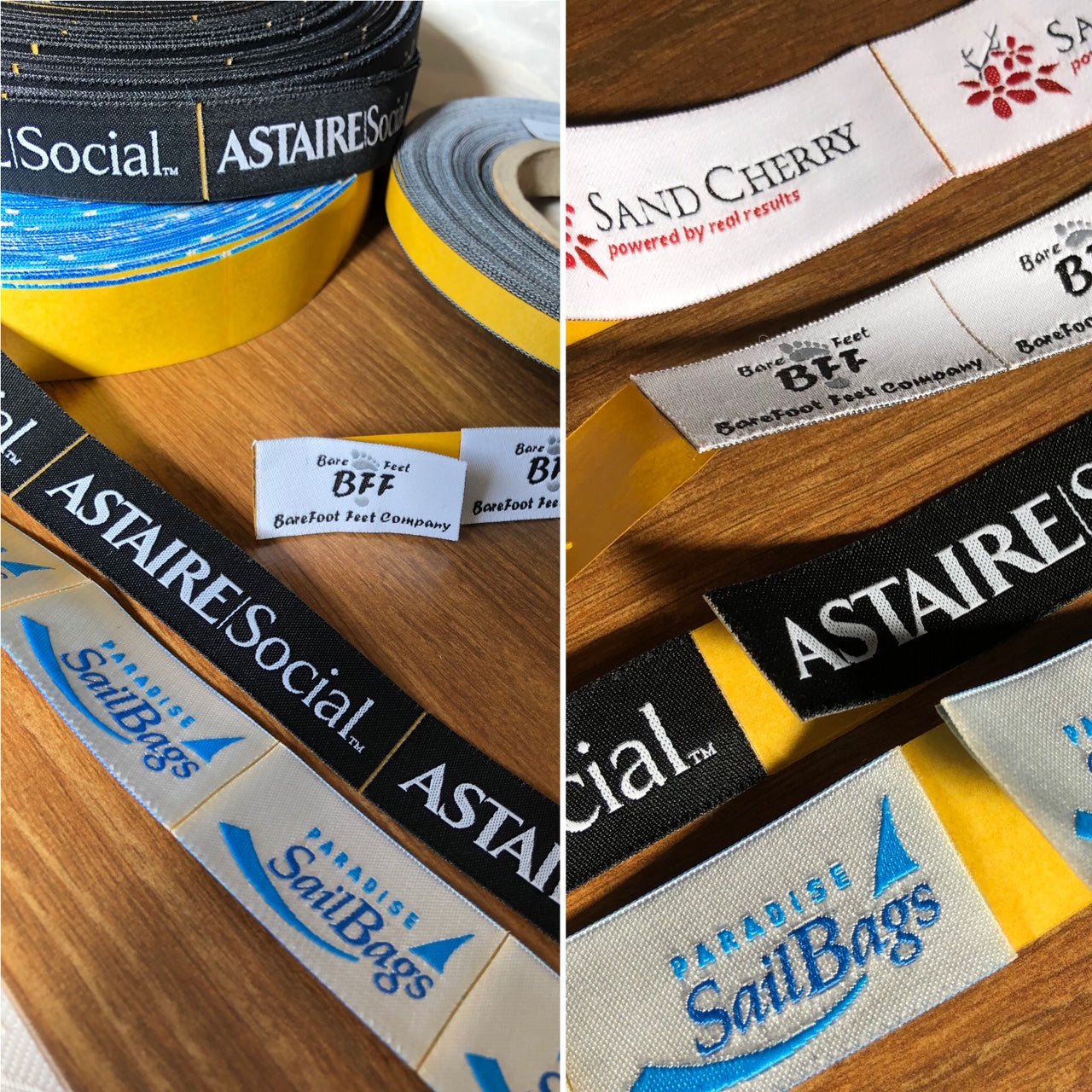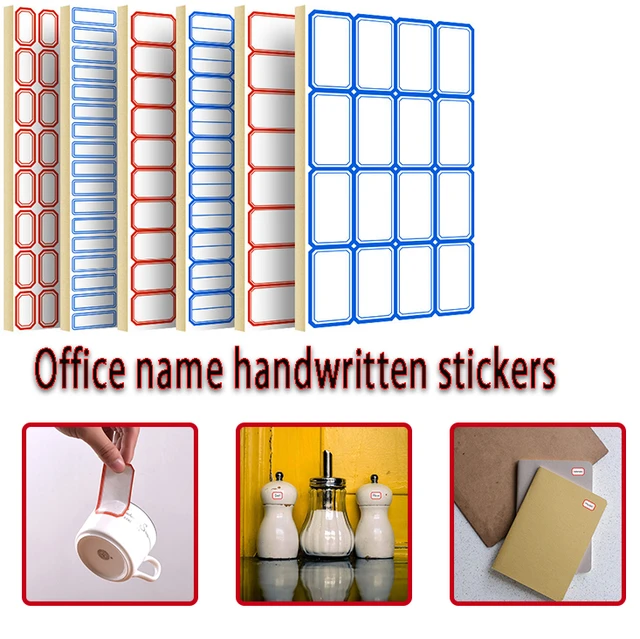Explore Multi-Use Applications for Self-Adhesive Labels
Explore Multi-Use Applications for Self-Adhesive Labels
Blog Article
Selecting the Right Self-Adhesive Labels for Your Business and Personal Needs
Picking the suitable self-adhesive labels for both organization and individual applications calls for a nuanced understanding of numerous factors that affect their performance. As we discover these vital aspects, it becomes clear that a critical strategy is necessary to ensure your tags not just meet assumptions but additionally enhance your total branding and company efforts.

Understanding Tag Materials
When selecting self-adhesive tags, understanding the different label materials is vital to ensuring ideal performance and sturdiness. The choice of material directly affects the label's long life, appearance, and capability. Common tag materials include paper, polyester, vinyl, and polypropylene, each offering distinct benefits and disadvantages.

Polyester tags provide remarkable sturdiness, being immune to tearing, dampness, and UV light. This makes them an exceptional choice for commercial applications or products that call for resilient labeling services (Self-Adhesive Labels). Polypropylene, while comparable to polyester, is normally less costly and supplies a great balance of resilience and print quality
Furthermore, take into consideration adhesive kinds-- long-term, removable, or repositionable-- depending on your certain requirements. Inevitably, selecting the right tag product is crucial for attaining the desired end result, making certain that your tags execute properly in their desired settings.
Identifying the Right Size
Selecting the ideal dimension for self-adhesive tags is a fundamental action that matches the choice of tag materials. The dimension of a tag can considerably impact its capability, visibility, and general influence. It is crucial to consider the desired usage of the tag when determining its dimensions.
Firstly, examine the details that needs to be presented. Labels having more text or graphics will call for larger dimensions to make certain readability and visual charm. On the other hand, minimalist designs might gain from smaller sized labels that keep a smooth visual.
In addition, take into consideration the surface area on which the tag will certainly be used. Different surfaces, such as bottles, boxes, or envelopes, may dictate particular size needs to maximize adhesion and presence.
Furthermore, consider the quantity of labels required; larger labels might be extra affordable for mass printing.
Examining Adhesive Toughness
Just how can one make sure that self-adhesive labels stay safely connected in various conditions? Evaluating glue toughness is crucial for ensuring that tags perform efficiently, whether in a regulated setting or subject to extreme temperatures, humidity, or other variables. The adhesive's performance is typically categorized into 3 groups: detachable, long-term, and ultra-permanent. Each category serves different applications, and understanding the planned use is necessary.
As an example, removable adhesives are ideal for labels that may need to be repositioned or eliminated without you can try here deposit, making them ideal for momentary applications. Conversely, permanent adhesives are designed to withstand various conditions and provide a solid bond, making them appropriate for long-lasting labeling needs.
Examining the sticky strength can include peel attachment examinations, which gauge the pressure called for to eliminate the tag from a surface. This examination helps establish if the adhesive will carry out effectively in real-world circumstances. Additionally, taking into consideration the surface material is crucial, as various substratums might interact with the sticky in different ways. Eventually, choosing the right adhesive strength guarantees that self-adhesive tags meet their function, keeping integrity and presence throughout their designated lifespan.
Choosing the Right End Up
The finish of self-adhesive tags plays a substantial function in their overall efficiency and look, complementing the sticky toughness previously reviewed (Self-Adhesive Labels). The choice of finish can influence not just the visual effect of the label but additionally its durability and functionality. Typical coatings include matte, gloss, and semi-gloss, each serving different purposes
A matte surface provides a non-reflective surface area that is excellent for creating, making it appropriate for tags that call for hand-written information. This finish likewise often tends to hide fingerprints and smudges, improving the label's appearance in time.
On the other hand, a gloss finish uses a shiny, lively look that enhances color saturation, making it best for advertising labels that need to stand out. Nevertheless, this finish might be much less suitable for creating, as it can smear conveniently.
Semi-gloss surfaces strike a balance in between both, using a slight sheen while keeping good writeability. Furthermore, consider elements such as dampness resistance and UV defense, especially for labels revealed to rough environments. By very carefully selecting the ideal surface, people and companies can guarantee their tags properly convey their desired message while maintaining sturdiness.

Considering Printing Options
Reviewing printing options is crucial for making best use of the efficiency of self-adhesive tags. The technique you pick will substantially affect the quality and longevity of the end product. Self-Adhesive Labels. Common printing techniques include electronic, flexographic, and thermal transfer printing, each offering distinct benefits and considerations
Digital printing is perfect for variable data and brief runs, permitting quick turn-around times and personalization. This method makes it possible for businesses to create labels with high-resolution graphics and detailed styles without incurring substantial setup prices. Nevertheless, it might not be one of the most affordable option for larger quantities.
Flexographic printing, on the various other hand, is fit for high-volume production. It makes use of adaptable alleviation plates to move ink onto various products, guaranteeing consistent top quality across huge sets. This technique is typically favored for its effectiveness and capability to print on a vast array of substrates, including those with unique finishes.
Thermal transfer printing is one more viable alternative, especially for tags that need sturdiness versus severe conditions. This method provides outstanding print quality and is frequently utilized for barcode and stock tags.
Inevitably, selecting the ideal printing option rests on your certain labeling demands, spending plan, and production quantity.
Final Thought
In final thought, picking the suitable self-adhesive tags necessitates view it mindful factor to consider of various factors, consisting of label materials, dimension, glue strength, coating, and printing options. Each element plays a critical role in making sure that the labels meet particular organization or personal requirements effectively.
When selecting self-adhesive labels, comprehending the numerous label products is important to guaranteeing ideal performance and resilience.Choosing the appropriate dimension for self-adhesive tags is a basic action that complements the selection of tag products. Ultimately, selecting the ideal sticky strength ensures that self-adhesive you could check here labels satisfy their function, keeping integrity and visibility throughout their designated life-span.
The finish of self-adhesive labels plays a substantial function in their total efficiency and appearance, complementing the sticky stamina formerly reviewed.In final thought, selecting the suitable self-adhesive labels demands careful factor to consider of numerous elements, including tag materials, size, sticky strength, finish, and printing options.
Report this page